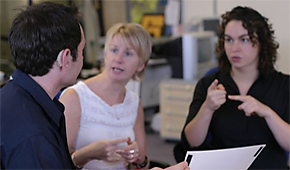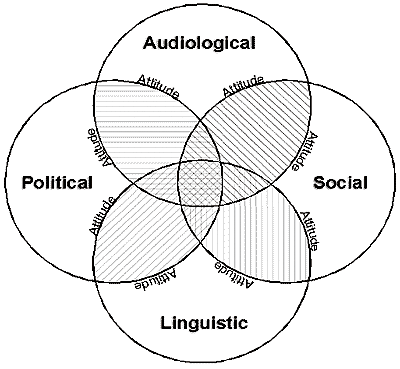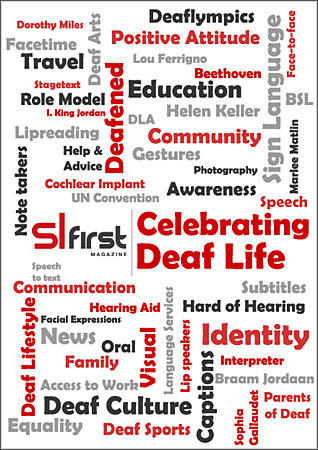Education5th March 2015
Top Ten Tips for BSL Learners
Turning up for lessons is a good start, these tips will help you take your signing to a new level
 As a young teacher of British Sign Language, I am often asked by students for my Top Tips to get the most out of the course. Students come from a range of backgrounds and the motivation to enrol on a BSL course also vary widely, but I think there are some standard tactics that students can employ to maximise their learning.
As a young teacher of British Sign Language, I am often asked by students for my Top Tips to get the most out of the course. Students come from a range of backgrounds and the motivation to enrol on a BSL course also vary widely, but I think there are some standard tactics that students can employ to maximise their learning.
I thought it might be useful to share my observations with current and future learners in the hope they are useful. So, here goes, my top ten tips:
 Number 1 Always Practice – lots of students come to their weekly 2 or 3 hour lesson but then don't practice during the week. To remember most of the signs you are taught, ideally you need to practice throughout the week.
Number 1 Always Practice – lots of students come to their weekly 2 or 3 hour lesson but then don't practice during the week. To remember most of the signs you are taught, ideally you need to practice throughout the week.
Number 2 Don’t be afraid to make a mistake – if you wait until you think you are perfect before signing, you will miss out on a lot. Try and stretch what you know and use mistakes to learn. Some people learn faster from doing it wrong and then learning the right way.
Number 3 If you don’t know the sign try it – with a lot of signs the hand pattern is obvious when you know it. Be in problem solving mode when you are trying to say something you don’t know, it will help to stretch your signing capability.
 Number 4 Ask the teacher if you don’t a sign, not learners in your class – other students may want to be very helpful, but they may not be completely accurate themselves, so you may well learn the wrong sign. It can also be disrespectful to your Deaf teacher if you don’t refer to them when you want to learn a sign. A strict translation of a word into a sign often does not work, as context and meaning are essential to deciding the sign, your teacher is best placed to help you get it right.
Number 4 Ask the teacher if you don’t a sign, not learners in your class – other students may want to be very helpful, but they may not be completely accurate themselves, so you may well learn the wrong sign. It can also be disrespectful to your Deaf teacher if you don’t refer to them when you want to learn a sign. A strict translation of a word into a sign often does not work, as context and meaning are essential to deciding the sign, your teacher is best placed to help you get it right.
Number 5 Use BSL websites, e.g. SLFirst, BSL Zone, See Hear etc – there are some great resources out there to help you understand BSL in context, used by deaf people or within deaf communities. For receptive skills practice, and deaf culture, these are great resources.
 Number 6 Practicing in front of the mirror – this can be a great benefit to help you to understand what other people are seeing when you are signing. It helps to ensure accurate use of hand shapes, location and confidence as well as facial expression and use of eyes.
Number 6 Practicing in front of the mirror – this can be a great benefit to help you to understand what other people are seeing when you are signing. It helps to ensure accurate use of hand shapes, location and confidence as well as facial expression and use of eyes.
 Number 7 When preparing a story, draw a picture instead of writing words – in the early stages of learning, it can be particularly difficult to change English sentences into BSL meaning and structure. If you draw a picture, you will find it easier to transition from what you want to say, into BSL delivery.
Number 7 When preparing a story, draw a picture instead of writing words – in the early stages of learning, it can be particularly difficult to change English sentences into BSL meaning and structure. If you draw a picture, you will find it easier to transition from what you want to say, into BSL delivery.
Number 8 Develop ‘in’ role-shifts/character skills by watching ‘You’ve been framed short clips’ – BSL is far more than signing. Learning and applying role shift skills are essential if you are to fully develop your BSL skills.
 Number 9 Immerse in learning by attending BSL events (Deaf environment) – cultural awareness and being around deaf people signing can be a huge help to your learning. You will benefit from understanding speed and location of signing as well as the use of eyes and facial expression.
Number 9 Immerse in learning by attending BSL events (Deaf environment) – cultural awareness and being around deaf people signing can be a huge help to your learning. You will benefit from understanding speed and location of signing as well as the use of eyes and facial expression.

Number 10 Aware of Deaf values (understand their frustration, lack of education etc) – the more deaf aware you are, the more you will understand the strength of feeling and strong tradition of the language.
I really hope that helps, but good luck to you all with your learning.
Article by Zayne Thomson, BSL Teacher
posted in Community / Education
5th March 2015





